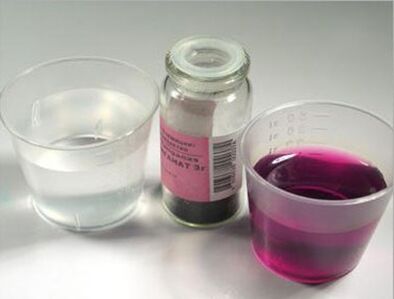The problem of nail fungus infection is quite common nowadays. Very advanced reproduction of fungi in the thickness of the nail plates and in the soft tissues surrounding the nail is fraught with complete loss of the nail without the possibility of partial recovery. That is why if you suddenly find changes in their structure or color that are not characteristic of the usual type of nails, be sure to contact specialists for treatment. They will help to determine the presence of a fungal infection and, if necessary, to distinguish it from hematomas of the nail, from the manifestation of systemic diseases of the body.
Causes of toenail fungus

Compliance with the usual rules of hygiene and alert to infection is the basis for the prevention of fungal infection. Failure to comply with these vital aspects leads to disease. In most cases, the fungus gets on the skin and nail plates when wearing someone else's shoes, performing bathing procedures in public places such as baths, pools, saunas, rarely or not washing your feet, don't fight overgrown nails. and cracks in the rough skin of the soles.
If the condition and disinfection of pedicure tools is poor, it is also possible to become infected with the fungus, although this is fraught with more dangerous infections and infections, such as hepatitis B and C.
All these reasons lead to the fact that it is easier for fungal microorganisms to populate previously healthy tissues, for which the most favorable conditions are created, which only exacerbate.
What does nail fungus look like?
Signs of toenail fungus do not appear at the same time. Before a clear change in the nail plates of the affected fingers in the region of the periungual soft tissue structures, skin cracks of various sizes and depths can be observed in the interdigital zones. Add to this itching sensation, tingling in the affected areas. The skin may begin to peel off, redden in varying degrees of severity of these symptoms. The key signs of a fungal infection are changes to the nail plate. It can thicken or thin, and a change in the usual color of the nail is also characteristic: white, light yellow, dark yellow, brown, light green, color combinations. The edge of the nail ceases to be even, in advanced cases the nail gradually loses its structure, breaks, crumbles. Ultimately, delamination of the entire board may occur.
Looking closely at his friends, especially those who are already mature and elderly, it is likely that he can easily identify the symptoms of nail fungus.
How can you distinguish a bruised nail from a fungus?
First of all, nail bruising is directly related to having a recent toe injury. External manifestations of a bruise do not occur immediately, but after 2-3 hours. Before this, the finger swells, it may turn red. Also, the blood that has accumulated under the nail plate (and this is due to its outflow from the damaged vessels of the nail bed) becomes visible to the naked eye. Its cluster initially acquires a scarlet-pink color, over time it changes to dark red, dark purple and even black. At the same time, the bruise decreases in size, and by the end of the healing process it can be seen as a point. The soft tissues of the finger retain swelling, and a bruise can also form on them. The severity of the symptoms depends on the force that caused the injury to the finger and nail.
Therefore, the symptomatology and the patient's actions preceding its appearance, characteristic of the picture of a bruised nail, are fundamentally different from the clinic of a fungal nail infection. The difference is also obvious in the mechanism of development of these diseases: they become infected with a fungus, further damage to the nail is associated precisely with the activity of microorganisms, a bruise is the result of injury, and a bruise is formed due to to damage the vessels of the finger, there are no microorganisms involved in the pathogenesis. Also, nail fungus is treated by a dermatovenereologist or dermatologist, while a bruise is closer to the activities of traumatologists and surgeons.
Method to control fungal infection with potassium permanganate.

Such a quick and easy recipe for diagnosing a fungus can be used at home. The main substance for the determination is potassium permanganate (potassium permanganate), which must be diluted in pure water to achieve its faint purple color. Next, you should put your feet in the colored water and soak them for a few minutes. If your nails really have a fungus, then potassium permanganate will not stain the affected areas (they will be white). The healthy part of the nail plates will turn brown. So you can easily diagnose the disease.
After finishing this experiment, don't forget to treat your nails with hydrogen peroxide to disinfect them. And be sure to contact a specialist if you find a positive diagnostic result. Now you know how to recognize nail fungus at home without much effort.
Diagnosis of nail fungus in the hospital certainly includes other, more precise laboratory methods to get to the bottom of the problem.
We treat nail fungus with medication.

As you know, many people prefer attempts at folk treatment of any disease to modern medical treatment with drugs. Nail fungus may be treatable with folk methods in some cases, but there is no evidence for this. That is why the main recommendation if you have a nail fungus infection is to comply with medical prescriptions, follow the treatment with pharmacological preparations.
Depending on how far the disease has gone, the forms of the drugs are selected. Fundamentally, they are divided into means of local (local) and general action. These drugs contain antifungal agents, a special group of pharmacological substances.
In the early stages of fungal infection, the use of local remedies (ointments, creams, gels) is preferable. If the fungus was already able to enter the general circulation, which is the most serious result, or the nail plate is significantly affected, the treatment is supplemented with general preparations (tablets or infusions of solutions).
The list of antifungal drugs intended for the treatment of fungal infections of the toenails includes: levorin, nystatin, fluconazole, ketoconazole, miconazole, amphotericin B, griseofulvin, itraconazole, terbinafine. These are the names of the active ingredients that form the basis of the treatment. Such funds can be part of various drugs. That is, the latest drugs are only the trade names of those substances that are listed first. In order not to get confused with the remedy, the way of use and dosages, be sure to consult with specialists and follow their treatment recommendations.
The most common treatment methods include:
- soda baths
- iodine treatment
- vinegar or vinegar essence therapy
- fungus treatment with laundry soap
Folk methods are effective only in the early stages, in conjunction with medication.
Prevention of nail fungus infection.

To protect yourself from fungal microorganisms, you do not need to follow any special rules, they are all simple if you introduce them into your daily routine. To begin with, refuse to put yourself in someone else's shoes, even in the most harmless in your opinion cases. Also be sure to wear individual slippers and slates in baths, saunas, swimming pools.
Constantly take care of your feet, remove germs well with soap, dry your skin. Try to avoid shoes that make your feet sweaty. Watch for cracks in the skin of the feet, especially near the nail plates and in the spaces between the fingers. Change socks daily and when dirty. And if foot sweating is your unpleasant routine, then we advise you to take an interest in special baths, which can help you a lot.
Fungal infection is a common disease among the population of the country today. Many are not even aware of their presence, perhaps referring to the symptoms of a bruised nail or banal everyday pollution. But, as you have already seen, the fungus causes quite characteristic clinical manifestations. One has only to take a closer look at their feet and seek medical help for treatment in time, but it is better to face infection prevention.
















